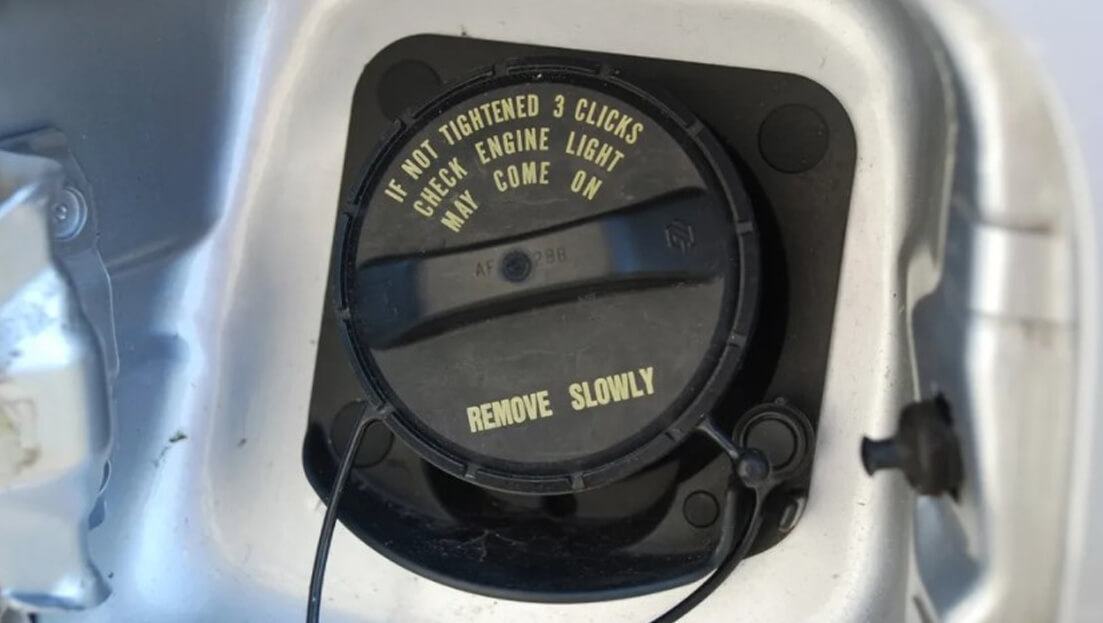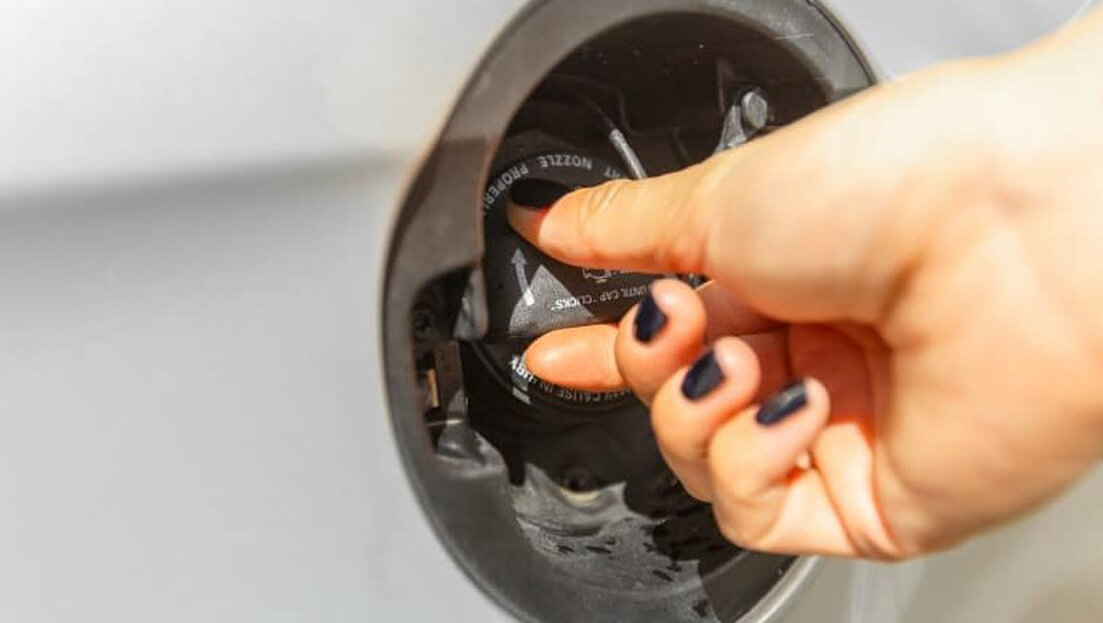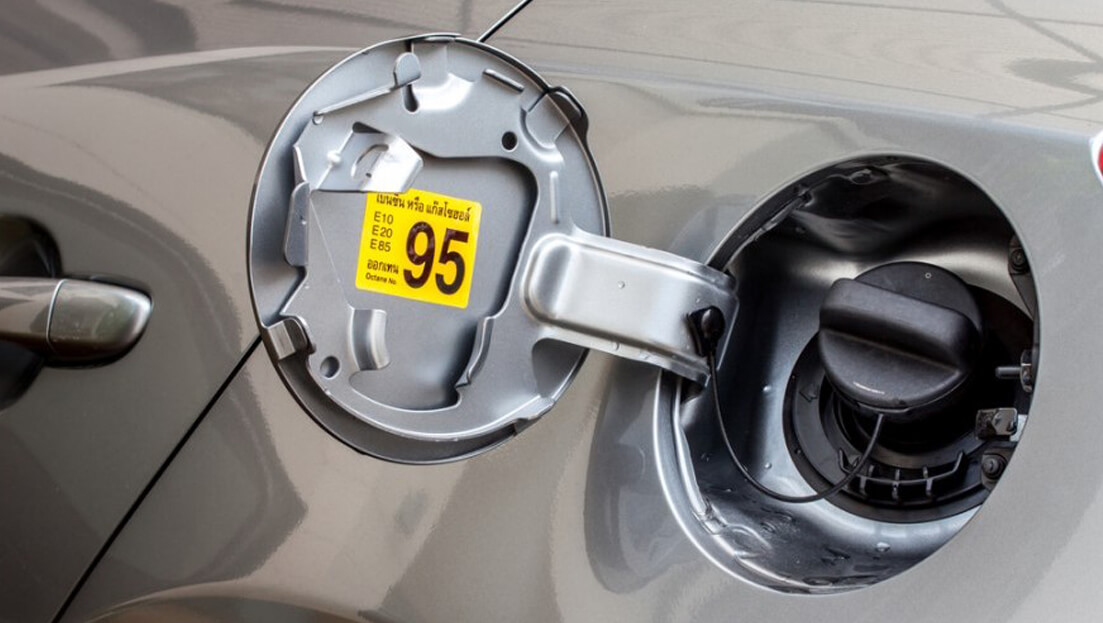The locking gas cap on your vehicle can be a small but important part of keeping your car safe and secure from theft.
However, many people don’t understand how does a locking gas cap works or why it’s so important to have one that locks on your vehicle.
The following guide will help you understand how does a locking gas cap work and why it’s important to lock up your vehicle to keep it safe.
What is a Locking Gas Cap?

A locking gas cap is a device that is designed to fit over the fuel filler neck of a vehicle and is secured with a key.
Its main purpose is to prevent unauthorized access to the fuel tank and prevent fuel theft.
A locking gas cap is an aftermarket product and is not typically included as part of the standard equipment on a vehicle.
It is usually sold separately and can be installed on most makes and models of cars and trucks.
The locking gas cap is compatible with specific makes and models of vehicles, and it comes in different types, including threaded, push-on, and vented locking gas caps.
Read also: Best Locking Gas Cap For Cars In 2022 | Recommended For You
How Does a Locking Gas Cap Work?
Locking gas caps are designed to be compatible with specific makes and models of vehicles. They come in different types, including threaded, push-on, and vented locking gas caps.
Threaded locking gas caps screw onto the fuel filler neck, while push-on caps snap into place.
Vented locking gas caps allow air to enter the fuel tank as fuel is used, which prevents a vacuum from forming and helps to maintain the proper fuel flow.
Here are some ways that a gas lock cover works:
- It provides a physical barrier: A locking gas cap fits tightly over the fuel filler neck, providing a physical barrier that prevents anyone from accessing the fuel tank without the proper key.
- It prevents fuel theft: One of the main reasons people use a locking gas cap is to prevent fuel theft. Without the proper key, the locking gas cap cannot be removed, making it difficult for thieves to steal fuel.
- It maintains proper fuel flow: A vented locking gas cap allows air to enter the fuel tank as fuel is used, which prevents a vacuum from forming and helps to maintain the proper fuel flow.
- It provides added security: A locking gas cap is an added layer of security for the fuel system of a vehicle. By preventing unauthorized access to the fuel tank, it can help prevent tampering and damage.
- It is easy to install: A locking gas cap can be installed quickly and easily, usually in just a few minutes. It is compatible with most makes and models of vehicles and comes in different types to fit various fuel filler necks.
Overall, a locking gas cap is an effective way to protect your vehicle’s fuel system from theft and tampering.
It is an affordable and easy-to-install solution that provides added peace of mind when parked in public areas.
Why Use a Locking Gas Cap?
There are several reasons why someone might choose to use a locking gas cap on their vehicle. Here are some of the most common reasons:
- Prevent Fuel Theft: Fuel theft is a common problem in many areas. A locking gas cap can help prevent thieves from siphoning gas from your vehicle, saving you money and hassle.
- Maintain Fuel Quality: When fuel is left exposed to the air, it can evaporate and lose quality over time. A locking gas cap helps prevent evaporation and keeps fuel fresher for longer.
- Increase Security: A locking gas cap provides an added layer of security to your vehicle. By preventing unauthorized access to the fuel tank, it can deter theft and tampering.
- Save Money: Fuel theft can be expensive, and replacing a stolen tank of gas can quickly add up. By investing in a locking gas cap, you can potentially save money in the long run by preventing fuel theft.
- Peace of Mind: Knowing that your vehicle is protected by a locking gas cap can provide peace of mind when parked in public areas or when leaving your vehicle unattended for extended periods.
Read also: Repair Parts Online Selling
Types of Locking Gas Caps
There are several types of locking gas caps available on the market, each designed to fit different types of fuel filler necks. Here are some of the most common types of locking gas caps:
- Threaded locking gas caps: These are the most common type of locking gas caps. They screw onto the fuel filler neck and have a key-operated lock that secures the cap in place.
- Push-on locking gas caps: These caps are designed to be pushed onto the fuel filler neck and do not require any threading. They have a key-operated lock that secures the cap in place.
- Vented locking gas caps: These caps have a vent built into them, which allows air to enter the fuel tank as fuel is used. This helps to prevent a vacuum from forming and maintains proper fuel flow.
- Non-vented locking gas caps: These caps do not have a vent and are typically used on vehicles that have a separate venting system built into the fuel tank.
- Combination locking gas caps: These caps have a combination lock instead of a key-operated lock. They are less common than other types of locking gas caps but can provide added security for your vehicle’s fuel system.
When selecting a locking gas cap for your vehicle, it is important to choose one that is compatible with your vehicle’s make and model.
This information can typically befound in your vehicle’s owner’s manual or by consulting with a professional mechanic.
Pros and Cons of a Locking Gas Cap
There are several pros and cons to using a locking gas cap on your vehicle. Here are some of the most common ones:
Pros
- Security: A locking gas cap can provide an extra layer of security for your vehicle’s fuel system, preventing fuel theft and vandalism.
- Peace of mind: Knowing that your fuel is secure can give you peace of mind, especially if you live in an area with high rates of fuel theft.
- Cost-effective: A locking gas cap is a relatively inexpensive way to protect your vehicle’s fuel system compared to other security measures.
- Easy to install: Installing a locking gas cap is a simple and straightforward process that can be done by most vehicle owners.
Cons
- Inconvenience: Using a locking gas cap can be inconvenient, as it requires unlocking the cap every time you need to refuel your vehicle.
- Potential for lost keys: If you lose the key to your locking gas cap, it can be difficult and expensive to replace.
- Compatibility issues: Not all locking gas caps are compatible with all vehicles, so it’s important to ensure compatibility before purchasing and installing one.
- Risk of damage: If the locking gas cap is not properly installed or if it is forced open, it can damage your vehicle’s fuel system.
Overall, a locking gas cap can provide added security for your vehicle’s fuel system, but it may also come with some inconveniences and potential drawbacks.
Consider your specific needs and circumstances before deciding whether a locking gas cap is right for you.
How to Install a Locking Gas Cap?

If you have decided to install a locking gas cap on your vehicle, here are some step-by-step instructions to guide you through the process:
- Make sure you have the correct locking gas cap for your vehicle’s make and model. Check the manufacturer’s instructions to ensure compatibility.
- Remove the old gas cap from your vehicle’s fuel filler neck. Unscrew it counterclockwise until it comes off.
- Take the new locking gas cap and insert it into the fuel filler neck. Make sure it is properly aligned and fits snugly.
- Twist the new locking gas cap clockwise until it clicks into place. This may require some force.
- Insert the key into the lock and turn it clockwise to secure the cap in place.
- Test the new locking gas cap to make sure it is properly installed. Try to remove it by twisting it counterclockwise. If it does not come off, the cap is properly installed.
- Keep the key to the locking gas cap in a safe place. You will need it to unlock the cap and refuel your vehicle.
It’s important to note that installing a locking gas cap may require some additional steps or modifications depending on your vehicle’s make and model.
If you are unsure about how to install a locking gas cap, consult with a professional mechanic or refer to the manufacturer’s instructions for guidance.
Read also: Extend the Life of Your Car Battery With These 5 Tips
Frequently Asked Questions (FAQs)
Can a locking gas cap improve fuel efficiency?
No, a locking gas cap does not improve fuel efficiency. It simply prevents unauthorized access to the fuel tank.
Are locking gas caps compatible with all vehicles?
No, locking gas caps are designed to be compatible with specific makes and models of vehicles.
Can a locking gas cap prevent fuel contamination?
No, a locking gas cap cannot prevent fuel contamination. However, it can prevent unauthorized access to the fuel tank, which can help to prevent contamination.
Are locking gas caps easy to install?
Yes, most locking gas caps are easy to install and can be done in just a few minutes
Conclusion
In conclusion, a locking gas cap can be an effective way to protect your vehicle’s fuel system from theft and vandalism.
While there are some potential drawbacks, such as inconvenience and compatibility issues, the benefits of increased security and peace of mind may outweigh these concerns for some vehicle owners.
When installing a locking gas cap, be sure to follow the manufacturer’s instructions carefully and consider consulting with a professional mechanic if you are unsure about the installation process.
With proper use and maintenance, a locking gas cap can provide an added layer of protection for your vehicle and its fuel system.






